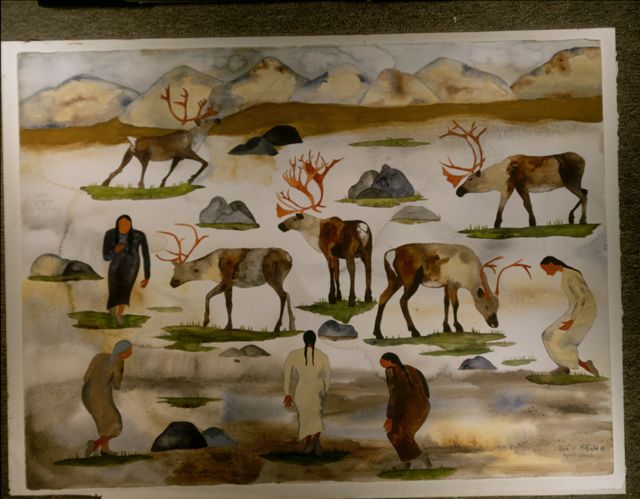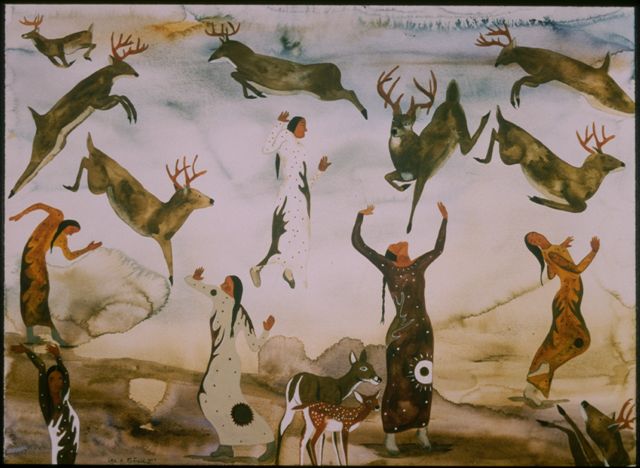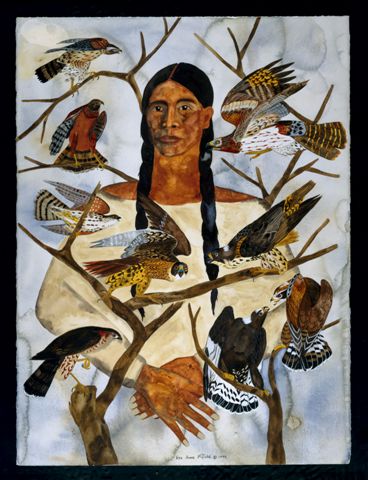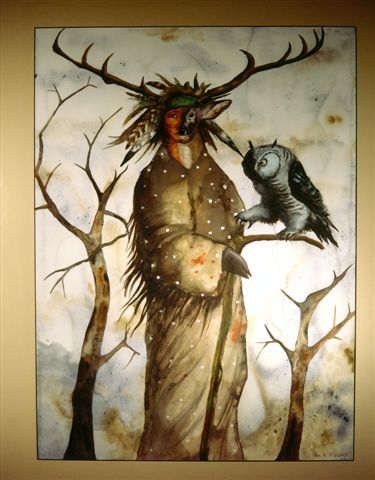Colored Stories: Lisa Fifield at Ancient Traders
Dean Seal describes the resonant work of Lisa Fifield, which you can see at Ancient Traders Gallery




You have just until January 15th to take in a choice collection of Native American Art at the Ancient Trader’;s Gallery in Minneapolis. Lisa Fifield takes dream imagery out of folk tales and brings them to vivid life on canvas.
Her work draws from many sources. The stories may be ones we know of, as in work inspired by Louise Erdrich. “Manitou” is a piece that shows the merging identity of the human, the elk, and the tree in a naturalistic, alert flowing together of souls. With human clothes, a half-human face, a hoof for a hand, a branch that an owl is poised on, this personified myth on a grey winter backdrop makes the unity of soul and nature a reality, the imagination made solid. Some translations of Manitou define it as the Great Spirit, as “The Uncreated.” In this piece, we see a manifestation of the creator god that poses a oneness of life, nature as sentient, creation as a living thing. A shared kinship is evident; a potential harmony of life forms is realized.
Another piece, “Dancing of the Elk Clan Women,” shows a troupe of women in a tribal gathering of joy, dancing in an expression of togetherness that transforms them into leaping, flying elk. They are shape-shifting from earthbound humans to gravity-free creatures of ecstasy. The earthy colors of the mild watercolor background and vivid gouache foreground colors make the figures threaten to leap off the canvas.
Another piece, “Pretty Voice Hawk Woman” is a tribute to the people killed at Wounded Knee, with the birds representing the living souls of the departed. The ten birds are drawn with patient attention to detail, and their centerpiece human looks out with both the hard knowledge of loss and a fierce determination to survive.
Fifield (Oneida, Black Bear Clan) had classical training at the Atelier LeSeur School of Art in Wayzata, and taught herself watercolor techniques. Some of her work was chosen for the inaugural show of the Museum of the American Indian, which the Smithsonian opened in New York City in 1994. Her work is exhibited nationwide.
Much of her inspiration comes from the stories of the Oneida, one of the five Iroquois nations in the Northeast. Storytellers have a tradition of tales in which women have a special relationship with animals, learning from them or teaching, comforting, and communicating. The Iroquois and other Native cultures understood early on the importance of storytelling, and it has always been central to the culture of American Indians.
A number of these pieces are available as prints, and have sold well. Prices range from $750 to $3,500. The show is part of the well-known program of community-based art, “Mitakuye Oyasin (All My Relations)” that is put together in the offices of the American Indian Neighborhood Development Corporation.